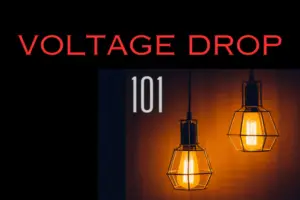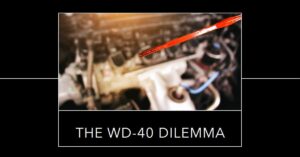Power cables are a crucial component of electrical systems, facilitating the transmission of electricity from the source to various devices and equipment.
The efficient delivery of electricity relies on maintaining a stable voltage throughout the system. However, voltage drop, which refers to the decrease in voltage as electricity travels through cables, can occur due to various factors.
In this article, we will explore the impact of bad power cables on voltage drop, discussing the causes, consequences, and potential solutions to mitigate this issue.
Bad power cables, whether due to faults like bad insulation, loose connections, corrosion, or degradation, contribute to increased resistance in the cables. This increased resistance impedes the flow of electricity, resulting in a higher voltage drop.
Understanding Voltage Drop
Voltage drop is defined as the reduction in voltage between the power source and the load in an electrical circuit.
It is a natural phenomenon caused by the resistance and impedance of the conductors. Excessive voltage drop can lead to a range of problems, including reduced equipment performance, increased energy costs, and safety hazards.
Therefore, managing voltage drop is essential for ensuring the proper functioning of electrical systems.
Impact of Power Cables on Voltage Drop
Power cables play a vital role in the transmission of electricity and can significantly affect voltage drop.
Several factors influence voltage drop in power cables, including the cable material and design, cable length and size, temperature effects, and the characteristics of the load being powered.
Any issues with these cables can exacerbate voltage drop and lead to further complications.
Types of Power Cable Faults
Various faults can occur in power cables, contributing to increased voltage drop. These faults include bad insulation, loose or damaged connections, corrosion or degradation of the cables, and overloading.
Identifying and addressing these faults promptly is crucial for maintaining the integrity of the electrical system and minimizing voltage drop.
How Bad Power Cables Affect Voltage Drop
Bad power cables can have several detrimental effects on voltage drop. One primary effect is the reduction in conductor conductivity, which leads to increased resistance in the cables.
This resistance impedes the flow of electricity, resulting in a higher voltage drop. Additionally, bad cables can cause uneven current distribution, further aggravating voltage drop.
Moreover, faulty cables may experience excessive heating, resulting in power loss and potentially damaging the cables themselves.
Consequences of Voltage Drop
Voltage drop can have significant consequences in electrical systems. Decreased efficiency is one such consequence, as a higher voltage drop requires more energy to compensate for the loss.
This increased energy consumption directly translates to higher costs for the consumer. Additionally, voltage drop can cause equipment damage and malfunctions, leading to downtime, repairs, and potential safety hazards for users.
Read also my article: The Silent Threat: Can Low Voltage Damage Your Electronics?
Detecting and Resolving Power Cable Issues
Regular inspection and maintenance of power cables are crucial for detecting and resolving any issues that may contribute to voltage drop.
Specialized tools and equipment can aid in diagnosing cable faults, allowing for timely repairs or replacements.
Promptly addressing cable issues not only reduces voltage drop but also enhances the overall performance and safety of the electrical system.
Mitigating Voltage Drop Effects
To mitigate the effects of voltage drop, several measures can be implemented. Proper cable selection, considering factors such as material, size, and insulation, ensures optimal performance and minimal voltage drop.
Adequate cable sizing is also essential, as undersized cables can contribute to increased resistance and voltage drop.
Conducting voltage drop calculations during the design phase helps determine the appropriate cable specifications for a given electrical system.
Additionally, the installation of voltage regulators or compensators can help stabilize voltage levels and minimize voltage drop.
Conclusion
The condition of power cables significantly influences voltage drop in electrical systems. Bad power cables can lead to increased resistance, uneven current distribution, and excessive heating, all contributing to higher voltage drop.
The consequences of voltage drop include decreased efficiency, equipment damage, and safety hazards. By implementing regular inspections, diagnostics, and maintenance procedures, it is possible to detect and resolve power cable issues promptly.
Proper cable selection, sizing, and the use of voltage regulators can also help mitigate the effects of voltage drop, ensuring optimal performance and safety in electrical systems.

